Toyota is best known for building vehicles with near-bulletproof reliability, arguably more so than any other car manufacturer.
The thing about reliable cars, though, is that they tend to be a bit boring, which is another thing people will say about Toyotas.
While there are some notable exceptions, most Toyota engines don’t offer mind-blowing performance, as the manufacturer’s main focus is on reliability and efficiency.
Toyota’s 2.7L 3RZ-FE engine most certainly belongs in the reliable camp, as it was designed specifically for use in commercial and off-road-capable vehicles.
Over the years, the 3RZ engine has gained a substantial following thanks to its unrivaled reliability, and people have even modified it to create more power.
In this article, we’ll take a closer look at the 3RZ 2.7 engine, its specs, reliability, and any potential problems — because even the most reliable engine can develop some issues over time.
Toyota 3RZ Engine Specs
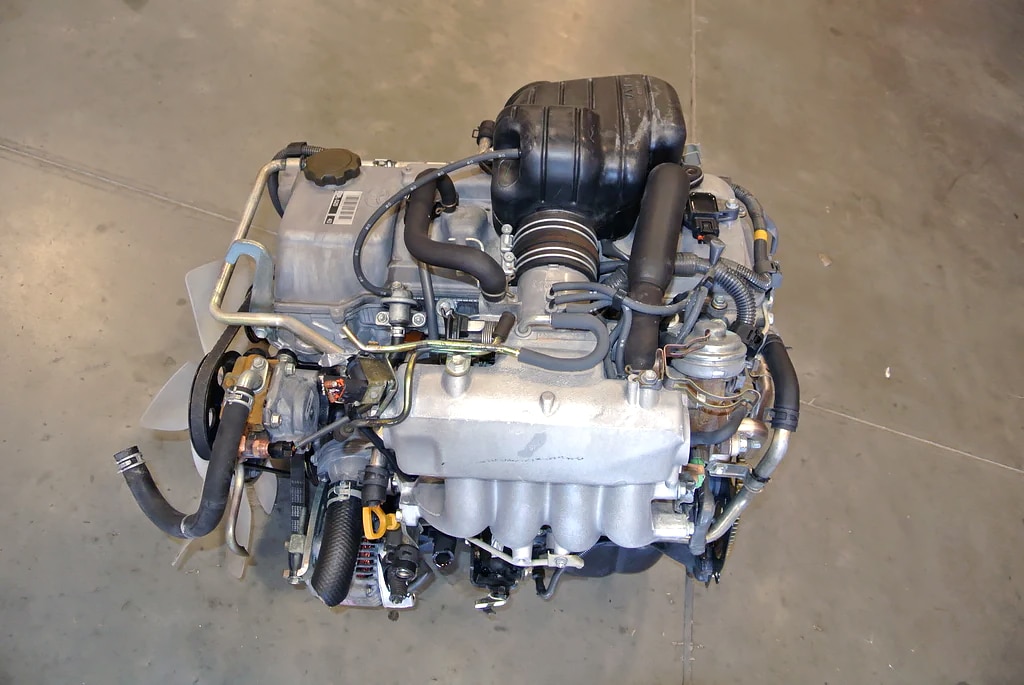
Engine code: 3RZ-FE
Production: 1994-2004 at Kamigo Plant, Japan
Layout: Inline-4, DOHC, 16-valve
Displacement: 2.7L (2,693 cc)
Fuel system: Multiport fuel injection
Cylinder bore: 95 mm (3.74″)
Piston stroke: 95 mm (3.74″)
Compression ratio: 9.5:1
Power: 150 hp at 4,800 rpm
Torque: 177 lb-ft at 4,000 rpm
Firing order: 1-3-4-2
Toyota manufactured the naturally aspirated 4-cylinder 3RZ engine at their Kamigo Plant in Japan from 1994 to 2004, as a replacement for the aging 22R-E powerplant.
Toyota fitted the 2.7L engine under the hood of some of its most popular commercial models, such as the Hilux, 4Runner, HiAce, and Tacoma, among others.
The 3RZ engine uses a deep-skirt cast iron cylinder block and a fully balanced forged crankshaft. The crankcase has 2 gear-driven balance shafts, and the con-rods are shot-peened forged carbon steel.
It also features aluminum pistons with resin-coated skirts. The block has oil jets that spray the bottom of the pistons to help with cooling. It’s already obvious that the 3RZ engine is over-engineered and built to last a lifetime.
The aluminum cylinder head has dual overhead camshafts and 4 valves per cylinder; 2 for the intake and 2 for the exhaust.
It doesn’t have hydraulic lifters/buckets, so valve adjustment is done via a shim-over-bucket setup. 3RZ-FE engines use a timing chain to drive the intake camshaft, which then turns the exhaust cam via a scissors gear.
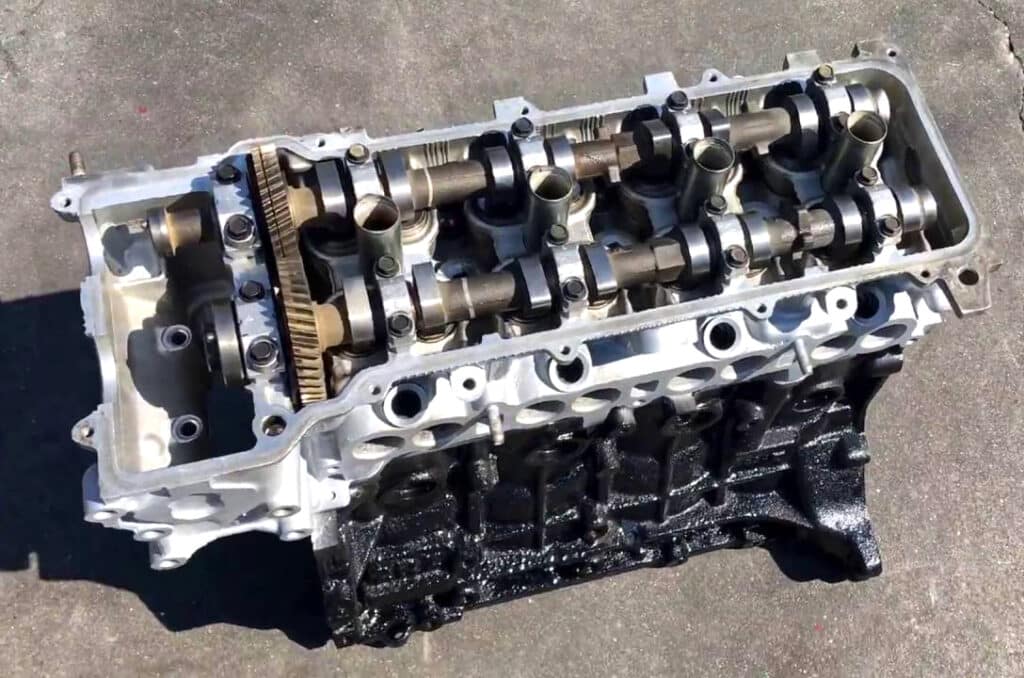
The camshafts have an intake duration of 230° and an exhaust duration of 224°. The 3RZ 2.7 engine features a hydraulic timing chain tensioner and an oil jet to lubricate the chain.
There’s an aluminum alloy intake manifold with 2 intake runners for each cylinder to help increase torque.
It uses a multiport fuel injection system that’s electronically controlled. It also features Toyota’s Electronic Spark Advance ignition, which can determine ignition timing via the ECM, based on input from various sensors.
Early 3RZ engines used a basic distributor and one ignition coil rather than a coil pack. We already mentioned some of the vehicles that received the 3RZ engine, but over the years, Toyota added to that list.
- 1994-1998 Toyota T100
- 1994-2004 Toyota Hiace
- 1995-2002 Granvia
- 1995-2004 Toyota Hilux
- 1995-2004 Toyota Tacoma
- 1996-2000 Toyota 4Runner
- 1996-2004 Toyota Land Cruiser Prado
- 1998-2002 Toyota Touring Hiace
All the vehicles were either for commercial use, or at least capable of somewhat heavy-duty use, and thanks to the engine’s reliability, many of them can still be seen driving on roads today.
After 10 years in production, the 3RZ engine was eventually replaced by a new 2.7L engine in 2004, the 2TR-FE.
Toyota 3RZ-FE Reliability and Problems
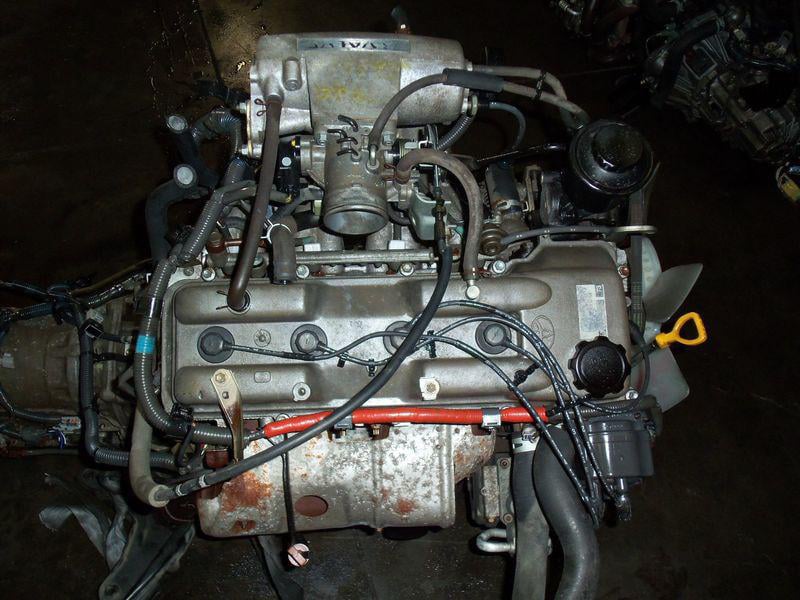
Even though the 3RZ engine is known as one of the most reliable Toyota engines ever made, there are still some common problems owners and potential buyers should be aware of.
Rather annoyingly, engines that are 100% free of any issues don’t seem to exist, but we believe that the 3RZ-FE is as close as it gets.
The issues that have affected the most 3RZ-FE owners include accessory belt failure, stretched timing chain, balance shaft bearing failure, and water pump failure.
In addition, the 3RZ engine does require frequent valve adjustments, which is a maintenance issue rather than a reliability problem. This is something that owners sometimes skip, which can lead to more severe problems.
Timing Chain Stretch
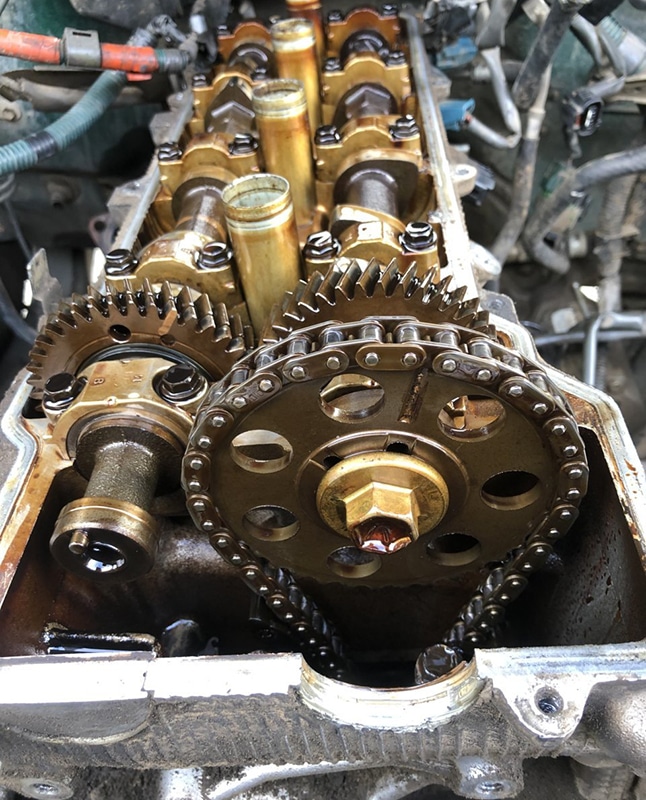
Like many other Toyota engines, the 3RZ uses timing chains rather than timing belts. Timing chains connect the cam and the crank via gears and rely on chain tensioners and guides to keep them working as they should.
These timing-related parts do require a certain oil pressure in order to work as they should, and inconsistencies can eventually lead to problems down the road.
In most cases, timing chain failure is a direct result of a lack of maintenance, where owners don’t inspect the timing chain when it hits the 100,000-mile mark.
Many owners continue to drive until it hits its 150,000-mile life expectancy — sometimes they even go beyond that.
It’s important to check the timing chain for signs of wear, such as stretching, and occasionally it’s necessary to replace it before the recommended interval.
A timing chain with too much stretch can jump the timing, which can lead to the pistons hitting the valves, causing severe damage in the process.
Timing chain failure can be easily avoided just by performing some preventative maintenance, and you can even extend its life with frequent oil changes, by using high-quality oil.
Accessory Belt Failure
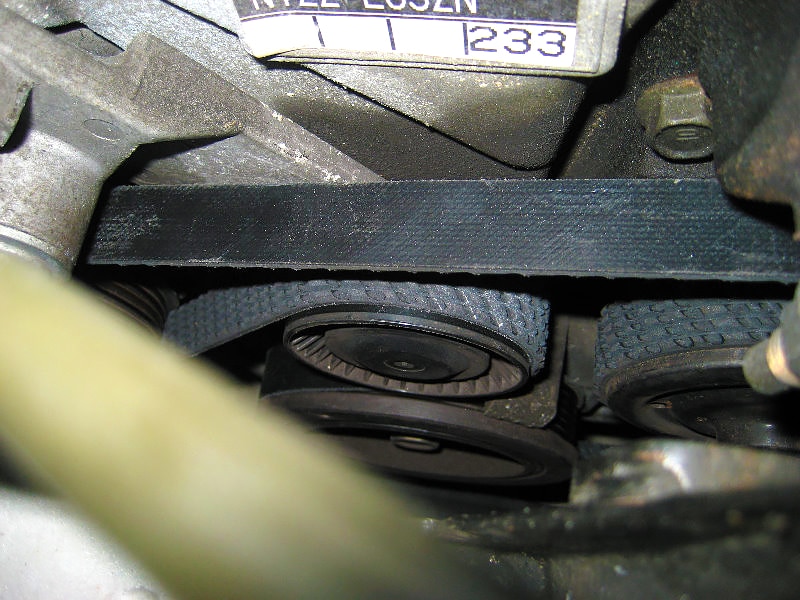
The accessory belt, also referred to as a serpentine belt or drive belt, runs various systems, such as the alternator, air-conditioning, and power steering.
That’s a lot of stress to handle for a simple rubber belt, and when you add heat and friction to the mix, you’re looking at some serious wear and tear over time.
The 3RZ engine’s accessory belt should last around 100,000 miles without failing, but it’s usually smart to change it sooner rather than later.
You should also inspect the belt regularly, and if you see any signs that it might break, such as cracks or fraying, replace it before it breaks.
Balance Shaft Bearing Failure
The Toyota 3RZ-FE engine is an inline 4-cylinder unit, so it has two balance shafts that help cancel out the vibrations that are inherent in the engine design.
Balance shafts work by rotating in the opposite direction of the engine; they rely on bearings to do so.
Unfortunately, the 3RZ engine’s balance shaft bearings have been known to fail, which is made obvious to the driver when the engine begins to vibrate excessively.
Usually, this is fixed by fitting a new bearing, but there are kits out there that eliminate the balance shaft entirely.
The kits come with new bearings, replacement inserts, billet aluminum install drivers, an oil squirter for the chain, a drill bit, and a tap to plug the oil galley. They can be used on both stock and highly modified engines.
Seeing as balance shaft bearing failure is one of the very few issues with the 3RZ’s bottom end, eliminating it seems like the way to go.
Water Pump Failure
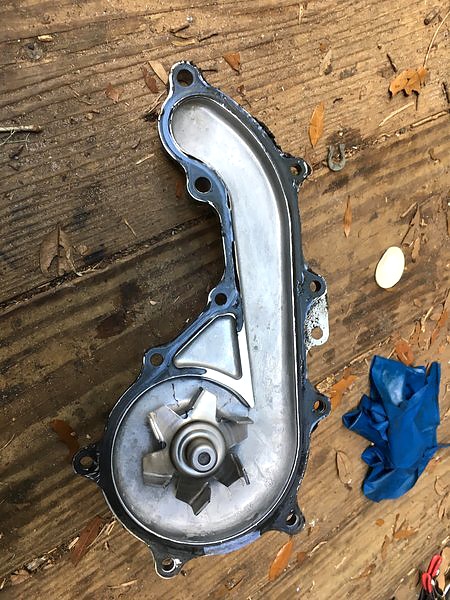
Water pump failure on the Toyota 3RZ engine is another issue that tends to happen due to lack of maintenance.
The water pump is a very important component, as it helps maintain the engine temperature, and if it fails you risk overheating the engine.
The 3RZ’s water pump is driven by the accessory belt we mentioned earlier, and even if the belt is fine, other parts, such as pulley bearings and internal seals will wear out with time.
While you might be lucky to spot a water leak, water pump failure often doesn’t show any symptoms prior to breaking.
To make matters worse, there doesn’t seem to be a standard answer to how long the water pump can last, as some owners report they’ve never changed it in 200,000+ miles, while others change it around 75-80,000 miles.
Our top tip is to go by what the service manual recommends or replace it alongside the accessory belt if that’s already on its way out.
The 3RZ-FE water pump is readily available online, so getting your hands on one isn’t difficult.
Valve Adjustment
As we already mentioned, the 3RZ engine doesn’t really have a valve adjustment problem, but it does require one very frequently.
Some owners choose to ignore the valve adjustment intervals, which can have dire consequences.
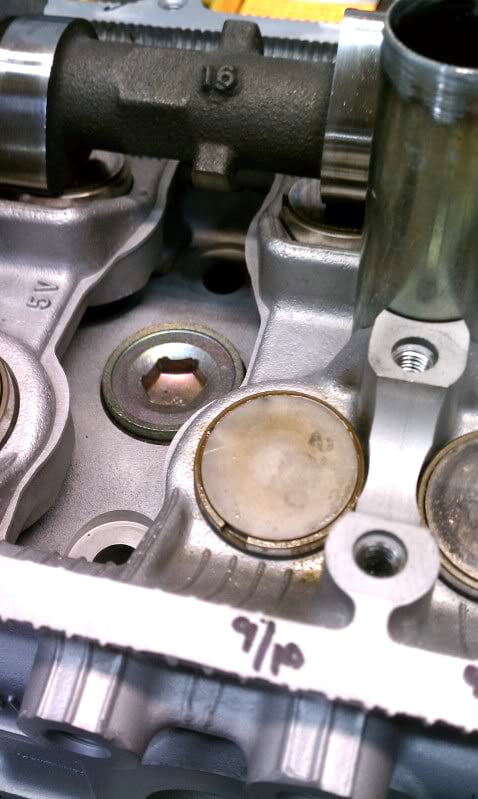
Toyota states that the valves should be checked and potentially adjusted every 25,000 to 30,000 miles.
Now, to make things more confusing, Toyota themselves have also told dealers not to mess with the valves unless there’s a distinct ticking sound from the engine.
Some owners have driven their Tacomas and Hiluxes over 200,000 miles without ever checking them. If the valves are out of spec, you can potentially cause damage to them, and they’ll need to be replaced.
Replacing the valves can be a costly affair, not to mention that it shouldn’t be necessary in the first place if you just follow the valve adjustment recommendations.
You don’t have to be a brain surgeon to adjust the valves on a 3RZ engine, but it does require some tools, including a set of feeler gauges, as well as knowing what the valve clearance should be.
If they’re out of spec, you’ll need to replace the valve shims to sort out the problem.
Toyota 3RZ Horsepower and Performance Parts
From the factory, 3RZ horsepower isn’t anything to write home about.
The 3RZ 2.7 engine produces a mere 150 hp at 4,800 rpm and 177 lb-ft of torque at 4,000 rpm.
These numbers might look impressive on paper, but they’re actually quite underwhelming if you consider the size of the vehicles powered by this engine.
Then again, it was never designed to deliver tons of performance — reliability is the name of the game here.
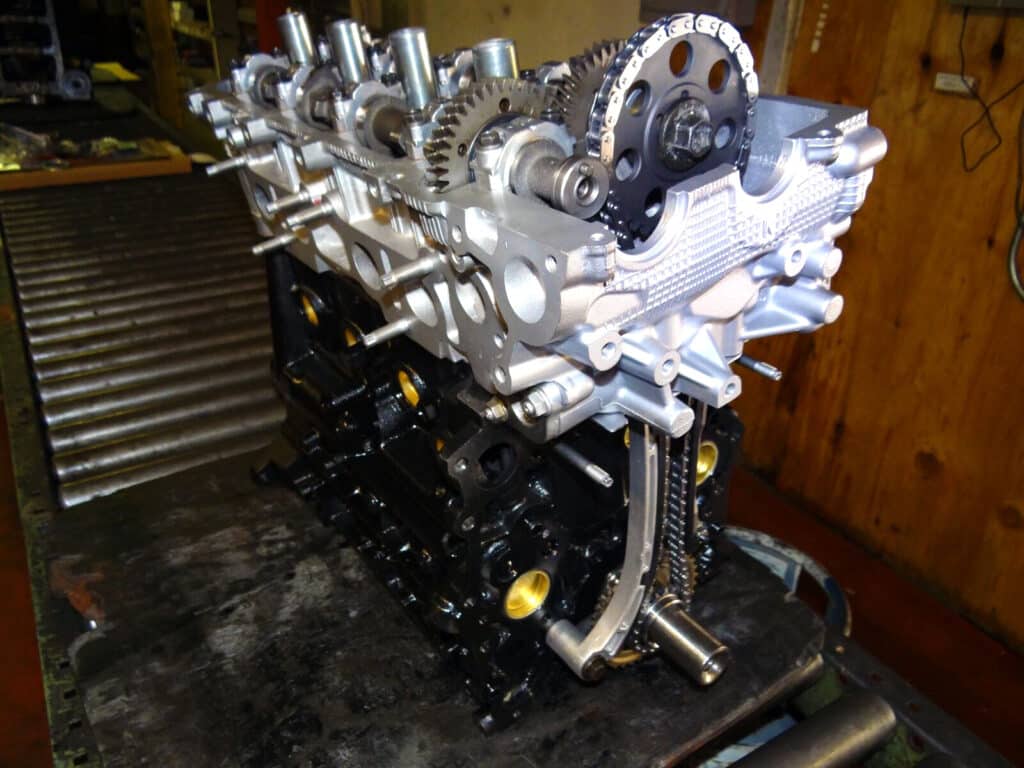
Luckily, some aftermarket Toyota 3RZ performance parts are available for those who would like a bit more power.
Don’t expect any crazy power figures if you decide to keep it naturally aspirated, though.
Installing a set of aftermarket headers or exhaust manifold, a catback exhaust, along with a decent short ram or cold air intake, cams, and a proper tune will free up around 30 hp if you’re lucky. That said, it will potentially cost a couple of thousand dollars.
A better option would be to convert it to forced induction, fitting either a supercharger or turbo — again, it won’t be cheap, but it will release a lot more power than a naturally aspirated build.
Toyota offered a TRD supercharger for the 3RZ engine, but if you can’t find one of those, LC Engineering offers both low-boost and high-boost supercharger kits.
The low boost kit will increase power to somewhere in the region of 200 hp, and the high boost one will get you to 220+ hp, potentially more with supporting mods.
LC Engineering also sells turbo kits, and with one of these fitted, you can expect anywhere from 250 hp to a really impressive 400+ hp.
Obviously, the more power you want, the more it will cost, as you’ll need to invest in various upgrades to keep things from blowing up, such as bigger injectors, upgraded internals, stronger clutch, and so on.
That being said, it’s hard to deny the allure of an old Taco that’s able to keep up with modern sports cars – be warned that your Tacoma insurance rate might increase, though.
Concluding Summary
Most people purchase a vehicle with the 3RZ engine because it’s practically bulletproof.
The word workhorse springs to mind, but looking at the number of cylinders and its relative lack of power, a hardworking pony might be a better description.
Thanks to its reliability and toughness, the 3RZ is a highly-valued, yet economical option.
As it turns out, there’s more to this engine than meets the eye, as some tuners have extracted rather ridiculous amounts of power.
This proves that it can be just as useful on the drag strip as it is in the deserts of the Middle East or the snowy Scandinavian mountains — pretty impressive for an engine that can be picked up relatively cheaply on the used market.

